HAL 9000 is a fictional artificial intelligence character and the main antagonist in Arthur C. Clarke's Space Odyssey series. First appearing in the 1968 film 2001: A Space Odyssey, HAL is a sentient artificial general intelligence computer that controls the systems of the Discovery One spacecraft and interacts with the ship's astronaut crew. While part of HAL's hardware is shown toward the end of the film, he is mostly depicted as a camera lens containing a red and yellow dot, with such units located throughout the ship. HAL 9000 is voiced by Douglas Rain in the two feature film adaptations of the Space Odyssey series. HAL speaks in a soft, calm voice and a conversational manner, in contrast to the crewmen, David Bowman and Frank Poole.

"The Sentinel" is a science fiction short story by British author Arthur C. Clarke, written in 1948 and first published in 1951. Its plot and ideas influenced the development of the 1968 film 2001: A Space Odyssey and its corresponding novel.
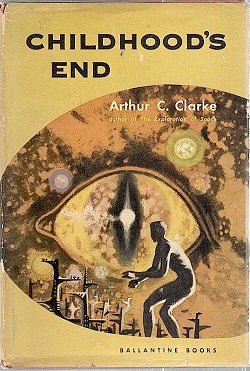
Childhood's End is a 1953 science fiction novel by the British author Arthur C. Clarke. The story follows the peaceful alien invasion of Earth by the mysterious Overlords, whose arrival begins decades of apparent utopia under indirect alien rule, at the cost of human identity and culture.
The Space Odyssey series is a science fiction media franchise created by writer Arthur C. Clarke and filmmaker Stanley Kubrick, consisting of two films and four novels. The first novel was developed concurrently with Kubrick's film version and published after the release of the film. The second novel was made into a feature film directed by Peter Hyams and released in 1984. Two of Clarke's early short stories have ties to the series.
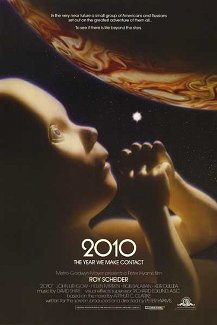
2010: The Year We Make Contact is a 1984 American science-fiction film written, produced, shot, and directed by Peter Hyams. The film was made as a sequel to Stanley Kubrick's 1968 film 2001: A Space Odyssey and adapts Arthur C. Clarke's 1982 novel 2010: Odyssey Two. 2010 follows a joint American and Soviet crew who are sent to Jupiter to discover the reason behind the failure of the Discovery One mission. The film stars Roy Scheider, Helen Mirren, Bob Balaban, and John Lithgow, along with Keir Dullea and Douglas Rain, stars of the previous film.
The Crusades were a series of religious wars sanctioned by the Latin Church in the medieval period. Crusading movement is about the ideology and institutions associated with crusading.
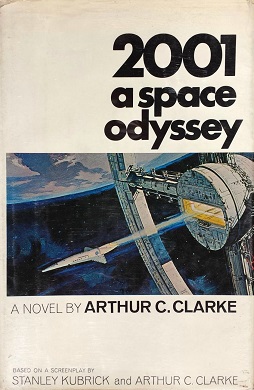
2001: A Space Odyssey is a 1968 science fiction novel by British writer Arthur C. Clarke. It was developed concurrently with Stanley Kubrick's film version and published after the release of the film. Clarke and Kubrick worked on the book together, but eventually only Clarke ended up as the official author. The story is based in part on various short stories by Clarke, including "The Sentinel". By 1992, the novel had sold three million copies worldwide. An elaboration of Clarke and Kubrick's collaborative work on this project was made in the 1972 book The Lost Worlds of 2001.
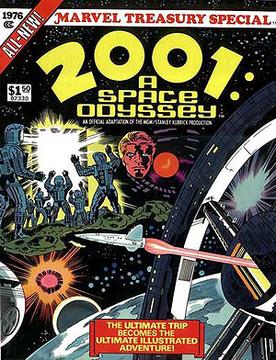
2001: A Space Odyssey is an oversized American comic book adaptation of the 1968 film of the same name as well as a ten-issue monthly series which expanded upon the concepts presented in the Stanley Kubrick film and the novel by Arthur C. Clarke. Jack Kirby wrote and pencilled both the adaptation and the series, which were published by Marvel Comics beginning in 1976. The adaptation was part of the agreement of Kirby's return to Marvel.
The Awakening may refer to:
2001 was a common year starting on Monday of the Gregorian calendar.
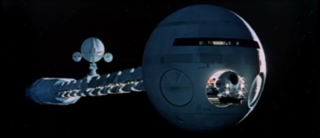
The United States Spacecraft Discovery One is a fictional spaceship featured in the first two novels of the Space Odyssey series by Arthur C. Clarke and in the films 2001: A Space Odyssey (1968) directed by Stanley Kubrick and 2010: The Year We Make Contact (1984) directed by Peter Hyams. The ship is a nuclear-powered interplanetary spaceship, crewed by two men and controlled by the AI on-board computer HAL 9000. The ship is destroyed in the second novel and makes no further appearances.
Since its premiere in 1968, the film 2001: A Space Odyssey has been analysed and interpreted by numerous people, ranging from professional film critics to amateur writers and science fiction fans. The director of the film, Stanley Kubrick, and the writer, Arthur C. Clarke, wanted to leave the film open to philosophical and allegorical interpretation, purposely presenting the final sequences of the film without the underlying thread being apparent; a concept illustrated by the final shot of the film, which contains the image of the embryonic "Starchild". Nonetheless, in July 2018, Kubrick's interpretation of the ending scene was presented after being newly found in an early interview.

Sir Arthur Charles Clarke was a British science fiction writer, science writer, futurist, inventor, undersea explorer, and television series host.

2001: A Space Odyssey is a 1968 epic science fiction film produced and directed by Stanley Kubrick. The screenplay was written by Kubrick and Arthur C. Clarke. Its plot was inspired by several short stories optioned from Clarke, primarily "The Sentinel" (1951) and "Encounter in the Dawn" (1953). The film stars Keir Dullea, Gary Lockwood, William Sylvester, and Douglas Rain. It follows a voyage by astronauts, scientists, and the sentient supercomputer HAL 9000 to Jupiter to investigate an alien monolith.
2001: A Space Odyssey is a 1968 science-fiction film.

The 1968 science fiction film 2001: A Space Odyssey featured numerous fictional future technologies, which have proven prescient in light of subsequent developments around the world. Before the film's production began, director Stanley Kubrick sought technical advice from over fifty organizations, and a number of them submitted their ideas to Kubrick of what kind of products might be seen in a movie set in the year 2001. The film is also praised for its accurate portrayal of spaceflight and vacuum.
In his lifetime Arthur C. Clarke participated in film, television, radio and other media in a number of different ways.
In popular culture, Stanley Kubrick's 1968 science fiction film 2001: A Space Odyssey has had a significant impact in such diverse cultural forms and media as film, literature, music and technology.
Odyssey I, Odyssey 1, or Odyssey One. may refer to:








